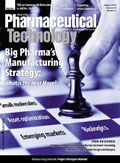An Ounce of Prevention
Industry's focus on cost cutting has led to a dangerous gap in training and knowledge.
An industry insider shared with me recently that he perceived a "crisis in training." In his opinion, industry-wide cost cutting has laid waste over the past 10 years to training programs and personnel. Not only have formal training programs gone by the wayside, he said, but layoffs have eliminated many of the skilled and knowledgeable practitioners who would typically act as mentors to less seasoned operators. He was blunt in his assessment of the situation: "We've gotten dumber as we've become leaner."

Michelle Hoffman
He remarked that the decline in the quality of process and procedural understanding among pharmaceutical manufacturing professionals is global. In his experience, even department managers don't understand the core technologies they deal with, including what they're doing or why. Companies, he said, are cutting back on funds to send their employees to outside training programs as well. As a result, mid- and upper-level managers are far less well versed in even basic knowledge than they've been in the past, and this, he said, may account for several of the recent well-publicized product recalls, contaminations, and plant closings.
Sadly, he does not think that companies perceive the problem as a training issue, and at the same time, registers his disbelief that corporations are not more concerned that department heads seem to demonstrate a basic lack of understanding of the policies and procedures they implement and enforce.
To find out whether this insider's opinion was just an isolated view, I talked to a second industry veteran whose indictment of the training programs within pharmaceutical companies was equally harsh. Abysmal. Woefully inadequate, he said. He described a system commonly known as "read and sign." That is, new hires are given documents describing some 200 or so procedures and policies that they are expected to read over the course of a week. They are then asked to sign a statement indicating that they've read and understood the documents before they are considered sufficiently "trained" to enter the plant floor, where they encounter for the first time the very equipment they're supposedly trained to operate.
A few times, he confided in me, he's entered those training rooms to find people asleep. He also related the recent product recalls to poor training programs.
"What training programs?" asked another industry veteran. "Companies are in the business of making product, not in training people. Every hour spent on training someone is an hour less that they're making tablets." This particular calculus does not account for the catastrophic effects of plant shutdowns and lost business following product recalls, which in the end seems to be the more accurate cost of inadequately training personnel.
In these cost-conscious times, the pharmaceutical industry is certainly not the only sector cutting corners on quality in order to improve cash flow. Publishers, for example, have reduced paper quality, turned to stock photos over custom graphics, or have replaced seasoned staff with interns. As a result, readers may notice more spelling errors or less engaging images in their publications. But unless the publication is a medical or professional journal, the quality gaps are not likely to endanger the public. The pharmaceutical industry does not have that luxury.
In the final analysis, some cost cutting is just too expensive, and it's tragic to think that massive recalls are required before companies reconsider their commitment to training personnel. The pharmaceutical industry shouldn't have to be reminded of the value of an ounce of prevention.
Michelle Hoffman is editor-in-chief of Pharmaceutical Technology. Send your thoughts and story ideas to mhoffman@advanstar.com.

Pharmaceutical Tariffs Are Imminent: How Industry is Bracing for Impact
April 16th 2025On April 14, 2025, the Trump Administration launched a national security-driven investigation into pharmaceuticals, a move that will likely result in tariffs being placed on pharmaceutical drugs, ingredients, and other components that are imported from outside of the United States.